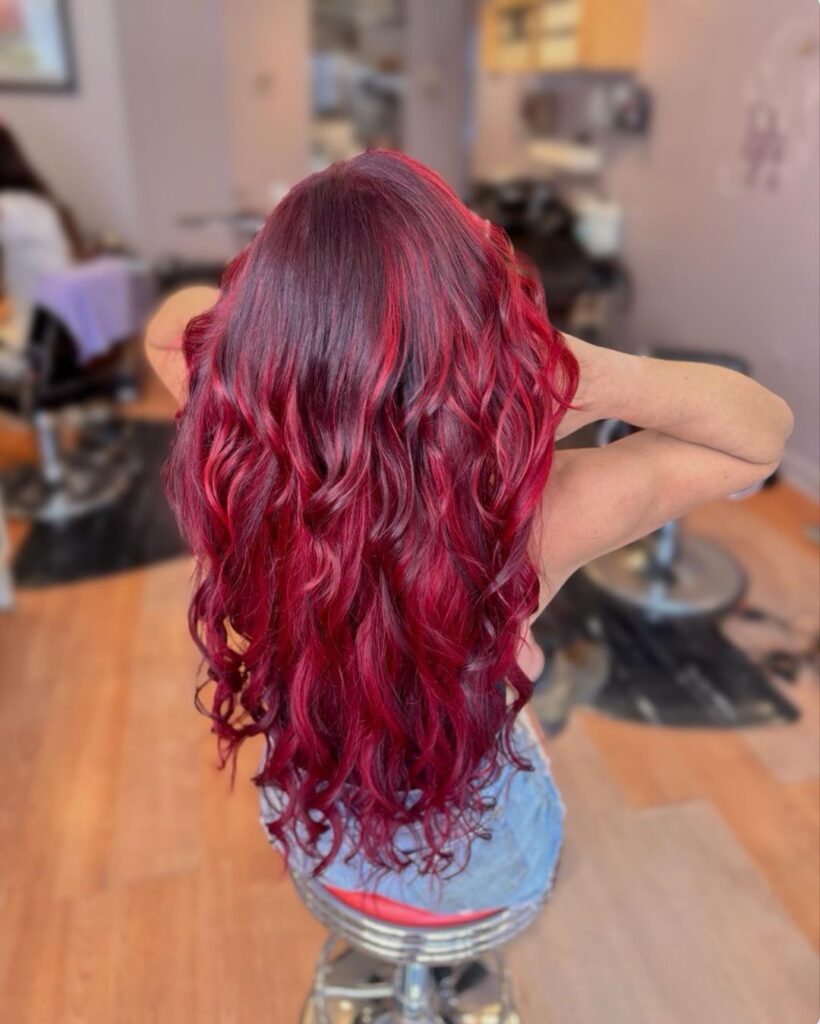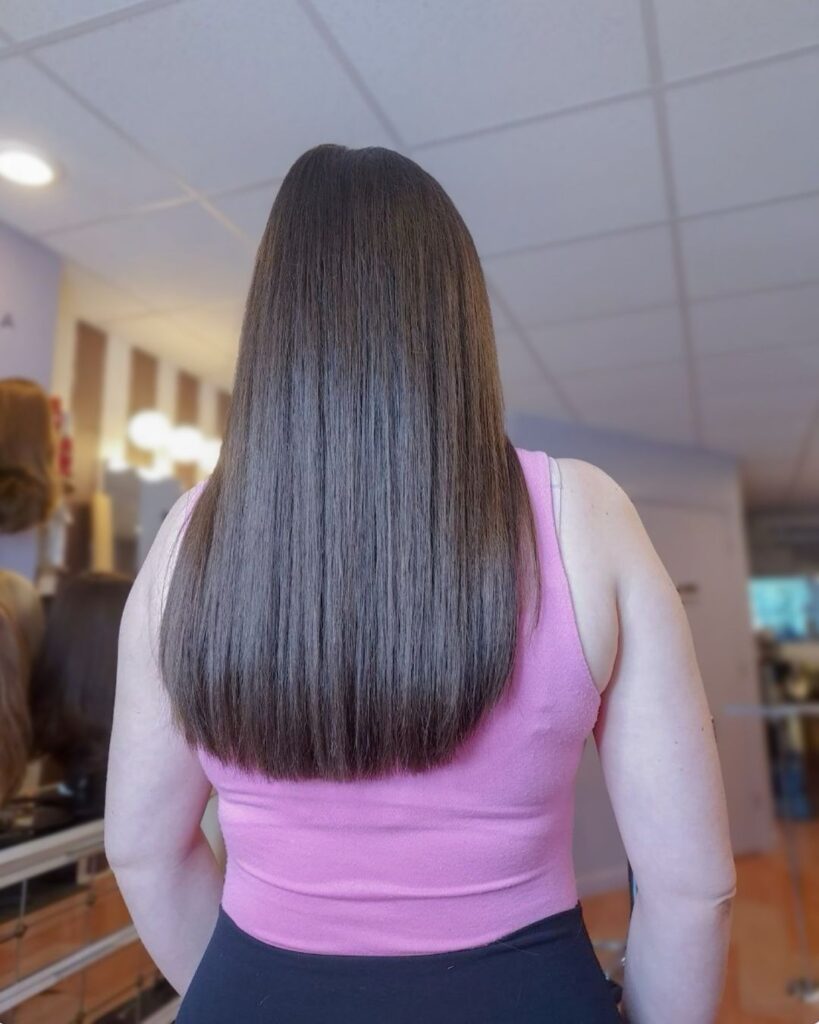Jewish wigs, known as sheitels, are a significant tradition for Orthodox Jewish women. They wear these wigs to maintain modesty, as required by their faith. This article explores the history, importance, and different types of Jewish wigs, providing insight into this meaningful practice.
Key Takeaways
- Jewish wigs, or sheitels, symbolize modesty and marital status for Orthodox women, allowing them to balance personal expression with religious values.
- The choice of wig style varies significantly among communities. Wigs showcase personal identity while adhering to modesty and traditional community norms.
- Contemporary wig trends reflect evolving fashion, with younger Orthodox women seeking stylish, natural-looking options that resonate with broader cultural influences.
Discover the Elegance of Slavic Beauty!
Explore Our Full Catalog of Slavic Wigs
Why Orthodox Women Wear Wigs

Orthodox women wear wigs primarily to adhere to modesty standards, ensuring they are evaluated for their character rather than appearance. This practice aligns with the principle of tzniut, which emphasizes privacy over attractiveness. Covering their hair helps women uphold the modesty integral to their faith and community values.
The choice of wigs allows Orthodox women to maintain modesty while embracing beauty and personal expression. Wigs that look natural help women feel confident and comfortable, reflecting their identity and community customs. Balancing modesty and beauty is a key reason why Orthodox women wear wigs and modest dresses.
Moreover, wearing wigs can reflect a woman’s community customs and personal identity, promoting a sense of belonging. The choice of wig style can be deeply personal, influenced by individual preferences and communal standards. This practice allows women to express their individuality while adhering to communal norms of modesty.
Types of Jewish Wigs

Wigs became a common alternative to traditional head coverings among Jewish women about 500 years ago, influenced by European fashion. Married Orthodox Jewish women often wear wigs known as sheitels, which symbolize their marital status. These wigs can vary significantly, from very natural-looking to distinctly synthetic, depending on community preferences and the modern technology used in their creation.
Wigs can be made from synthetic materials or human hair, each offering different styles and appearances. Custom-made wigs are also available, allowing women to choose styles that suit their preferences and cultural expectations. The choice of wig style can vary significantly among Orthodox communities, reflecting diverse interpretations of hair-covering traditions.
The fall is a partial wig often worn with a headband or scarf, making it a popular choice among younger and more active Orthodox women. The variety in wig types demonstrates the practice’s flexibility, enabling women to find options that suit their lifestyle and community standards.
The Process of Choosing a Jewish Wigs

Choosing a wig is a deeply personal process for Orthodox women. A secure fit is essential to ensure the wig stays in place and effectively covers the natural hair. This practical aspect helps maintain modesty and comfort throughout the day.

Hair covering choices, including wigs, often reflect personal style, community norms, and modesty beliefs. Women consider a woman’s hair by evaluating factors such as the wig’s material, style, and how well it aligns with their community’s standards. This process allows women to feel confident and comfortable in their appearance while adhering to their religious values.
DH Estetika Jewish Wigs
DH Estetika Wigs is a renowned brand offering stylish and high-quality wigs for Orthodox women. Designed to look natural, their wigs help women maintain modesty while feeling beautiful and confident. Popular styles from DH Estetika include Chocolate Delight, Fiery Ginger, Autumn Beige, Ginger Lob, and Classy Chestnut.
These wigs are made from real hair, ensuring they appear natural and comfortable. DH Estetika’s attention to detail and quality helps women cover their hair in a way that aligns with their religious values while enjoying beauty and personal expression.
Religious and Cultural Significance
Many rabbinic authorities have endorsed using wigs, acknowledging that they can enhance a woman’s appearance while still adhering to modesty standards. This endorsement highlights the balance between religious adherence and personal expression. However, there is an ongoing discussion within the Jewish community about whether wigs align with traditional values of hair covering.
A wig visibly signifies marital status within the Orthodox community. It represents a married woman’s commitment to traditional values and propriety. This practice is deeply connected to Orthodox Jewish women’s spiritual values and community identity, allowing them to navigate their identity while adhering to communal standards.
The debate around the significance of wigs continues within Orthodox communities, as varying opinions exist regarding their role in modesty and self-expression. This ongoing discussion reflects the dynamic nature of religious and cultural practices, allowing for diverse interpretations and adaptations.
Contemporary Practices and Trends
Modern wig shops like DH Estetika cater to younger Orthodox women by offering stylish and natural-looking sheitels, which are increasingly popular in the community. The evolution of wig styles has increased the demand for colorful and trendy options, mirroring broader fashion trends among younger women.
Younger Orthodox women often share their wig experiences on social media, influencing community trends and choices. Additionally, some Orthodox women choose wigs to navigate societal safety concerns, allowing them to blend in more easily in public spaces.
Comparison with Other Head Coverings

In addition to wigs, Orthodox women may opt for other head coverings like scarves or tichels, depending on personal and community standards. The choice of head covering, whether a wig, scarf or other headwear, reflects personal style while adhering to the communal standards of modesty.

Using wigs in Orthodox Judaism can stir debate regarding their appropriateness compared to traditional head coverings like scarves or hats. Certain community members believe that alternatives such as hats and scarves are more authentic hair-covering forms than wigs. These debates highlight the diversity of opinions within the community and the flexibility in hair covering.
Challenges and Controversies

The Shulchan Aruch, a key text in Jewish law, addresses the use of wigs for hair covering and the debates surrounding their appropriateness. Some community members argue that if wigs are perceived as more attractive than natural hair, they may undermine the intended purpose of modesty.
The cost and maintenance of wigs can pose significant challenges for Orthodox women. High-quality wigs are often expensive and require careful upkeep. Regular cleaning and proper storage are essential for preserving the quality of wigs used by Orthodox women.
Personal Stories from Married Orthodox Jewish Women

Many Orthodox women choose wigs that appear natural to reflect their identity rather than concern over how others perceive them. Stories from married Orthodox Jewish women highlight wigs’ importance in their daily lives and their role in maintaining modesty while expressing individuality.
These personal experiences offer a glimpse into the lives of women who navigate their religious obligations and personal preferences. They reveal how wigs help them feel connected to their community, maintain their religious values, and embrace their unique identity.
Care and Maintenance of Jewish Wigs

Proper wig care and maintenance are crucial for longevity and appearance. It’s important to avoid excessive washing of wigs to preserve essential oils and fibers. Human hair wigs should be washed every 7 to 14 days, while synthetic wigs can be washed every 10 to 15 years.
Washing a wig includes rinsing with cool water, applying wig shampoo, and conditioning with products designed for wigs. Regular detangling after each wear can help prevent tangling and matting in wigs.
Storing wigs on a stand or mannequin head helps maintain their shape and prevent damage. Traveling with a wig in a silk or satin bag helps minimize friction and tangling. Avoid using high heat on synthetic wigs unless they are labeled as heat-friendly.
Jewish Wigs
The practice of wearing wigs among Orthodox Jewish women is a profound expression of faith, modesty, and personal identity. From historical origins to contemporary trends, wigs play a significant role in the lives of married Orthodox Jewish women. By understanding the reasons behind this practice, the types of wigs available, and the process of choosing and maintaining them, we gain a deeper appreciation for this unique aspect of Orthodox Judaism.
Frequently Asked Questions
Married Orthodox Jewish women wear wigs to maintain modesty by keeping their natural hair private, which is an exciting expression of their cultural and religious identity!
Sheitels are fabulous wigs that married Orthodox Jewish women wear as a symbol of their commitment to modesty and marital status! They blend tradition with style beautifully!
Washing your human hair wig every 7 to 14 days keeps it looking fabulous, while synthetic wigs only need washing every 10 to 15 wears! Washing them at the right intervals ensures they stay in great shape!
You’ll love the popular styles from DH Estetika Wigs like Chocolate Delight, Fiery Ginger, and Autumn Beige! Each one adds a fabulous flair to your look!
Absolutely! The Jewish community is buzzing with discussions about whether wigs are as acceptable as traditional head coverings like scarves or hats. It’s a lively debate that reflects diverse opinions and practices!
Comments +